If you are an FDM user thinking about switching to resin 3D printing (or maybe you’ve already made the switch), you must have heard that it’s a different world. In this article we will dive into some critical errors and misconceptions people make when transitioning from FDM to SLA 3D printing. This is more common to beginners, but sometimes even more experienced users tend to have some bad habits.
It’s a common journey for 3D printing enthusiasts: they start with FDM 3D printing and once they are not satisfied with the details of the prints they start looking for other options and wander into the world of resin 3D printing. As a manufacturer of 3D printing resins we always try to keep in touch with our customers and 3D printing community. We discuss their needs and challenges, guide them through their first steps with resin 3D printing and take part in various pro-level discussions. This puts us in a unique position: by helping our customers we also get the opportunity to learn a lot from them. Throughout the years we gained valuable experience and noticed some common mistakes and paradigms that most of the beginners tend to stumble upon. We won’t be going into determining which one is better by comparing FDM vs Resin, but we’ll look into the differences that are very often overlooked.
Here’s our list of 9 mistakes to avoid when switching from FDM to resin 3D printing.
1. Thinking that resin 3D printing is very similar to FDM filament 3D printing
People who decide to get into SLA 3D printing often think that FDM vs resin have very similar 3D printing experience. But the short answer is “No”.
Learning curve of SLA 3D printing is usually way steeper than filament 3D printing. The first issue is that resin 3D printers vary a lot. This typically results in problem that one has to select appropriate liquid 3D printing resin for his own 3D printer. After getting good material, you have to select ideal 3D printing settings. Preparation of such parts like supports, attachment layers, hollowing, orientation etc. is different and require more intervention and skill. After 3D printing, you need to wash them with such chemicals as isopropyl alcohol and then post-cure your models. Thus, you have to acquire a post-cure chamber. Finally, you need to take basic safety measures as good ventilation, gloves and care.
When you put resin vs filament 3D printing you’ll see that they use the same file format, which is STL, but that is probably the only similarity. Of course, both technologies use polymers as their materials, but even those are totally different classes of polymers, i.e. thermoplastics vs photo-sensitive cross-linkable polymers. Therefore, mechanical properties of final 3D printed objects are totally different. So there aren’t many similarities.
2. Not hollowing objects in SLA 3D printing

It is critical to understand the necessity of hollowing. By making object hollow with thin walls you will be able to minimize shrinkage effect. The more material, the more it shrinks. High shrinkage will also typically lead to surface cracks and various undesired effects such as surface lines.
You can read more about it in this blog post: 10 reasons why you get unexpected horizontal lines on your 3D printed parts.
Hollowing is critical for bottom-up resin 3D printers in order to reduce layer cross-sectional area. Minimization of cross-sectional area will result in lower separation forces that occur when newly cured layer is delaminated from FEP film or PDMS. This will dramatically improve surface quality of object.
Remember that hollowing will also allow you to save a lot of 3D printing resin.
3. Using not enough of supports and relying on automatic algorithms
New SLA 3D printing users tend to oversimplify support placement procedure. People who come from filament 3D printing are used to straightforward automatic support generation. Even though this approach works well, however, that is not always the case for resin 3D printing. Poor support strategies will lead to many failures and frustration, which might end SLA 3D printing journey really fast.
In order to succeed, pay thorough attention and learn best support strategies for SLA 3D printing. There are a lot of critical points to analyze and learn.
You can have a look at our previous post that covers some key facets: 6 Key Principles of 3D Printing Supports that Work.
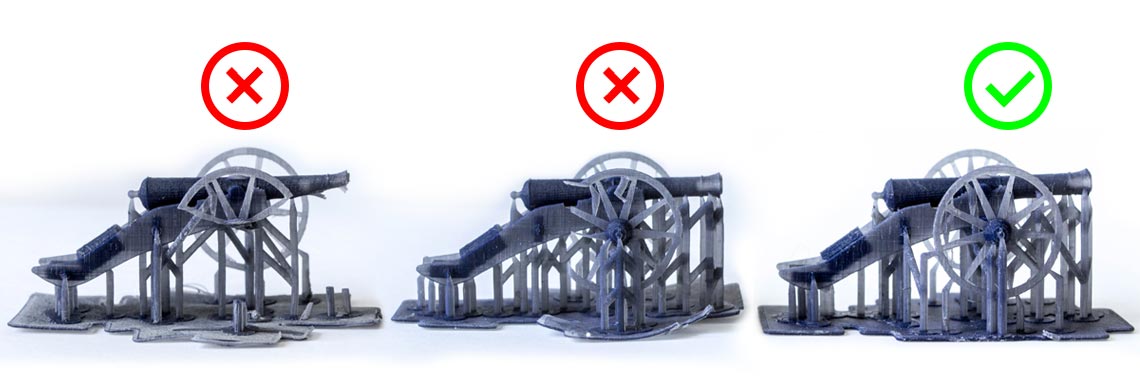
4. Expecting similar SLA 3D printing resins vs FDM filaments performance
It is not a secret that you cannot equally compare SLA 3D printing materials vs FDM thermoplastics that are used in filament 3D printing. Cured 3D printing resins tend to be more brittle and not as tough as most of thermoplastics like ABS or Nylon. That is because their nature is quite different.
PLA or ABS are more or less commodities in filament 3D printing. It is quite easy to get a spool at very low price. But that is not the case with 3D printing resins as most of them are formulated quite differently and have their own unique properties or applications. It is a very complex task to formulate extremely well-tuned resin with good features especially when 3D printers vary so much.
The take-away here is that your application should determine your 3D printing technology and materials. Not the opposite. Since composition of 3D printing resins varies a lot, properties do as well. However, 3D printing resins are usually more resistant to temperature, chemicals, but are more brittle. FDM filaments (thermoplastics) are usually tougher and less prone to breakage compared to resin. However, some filaments like PLA are more sensitive to temperature.
5. Cleaning with IPA for prolonged periods of time
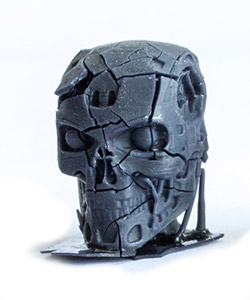
Post-processing and cleaning is a big difference when comparing FDM vs resin 3D printing. We have already mentioned that resin 3D printing requires the use of additional chemicals such as isopropyl alcohol. And you have to handle it with care. On top of that, incorrect cleaning with IPA (isopropyl alcohol) is a common mistake beginners make. We have done a research lately that analyzes IPA impact on 3D printed parts.
To summarize it you should not keep your parts submerged for prolonged periods of time. Best duration is 15 minutes maximum with various resins. If you keep parts submerged for too long, various surface deformations and cracks can pop up. Level of damage mostly depends on resin, but we managed to screw up almost all resins out there with this research.
You can read more about that here: Can IPA cause cracks on my 3D prints?.
6. Forgetting to use attachment layer (raft) for your SLA 3D prints
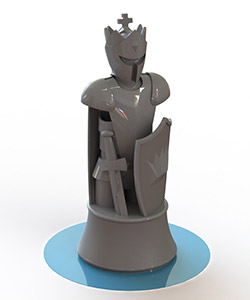
Generally, attachment layer or raft is a thin pad on which you lay down your 3D object. You can incorporate it during your CAD process or add with some SLA 3D printing software solutions. Both FDM and resin 3D printing uses rafts, but the purposes in both are a bit different. It is much more relevant to “bottom-up” resin 3D printing as it produces objects upside down.
Forgetting to incorporate this element can greatly reduce your chances of success. Attachment layer, which has higher surface area than cross-sectional area of subsequent layers, dramatically increases adhesion between first layer of the object being printed and build plate. This good adhesion reduces risk of object detaching and falling down during 3D printing.
You can read more about this 3D printing strategy here Attachment Layer in SLA 3D printing: what you need to know.
7. Not spending enough of time to analyze 3D printing resin properties and settings
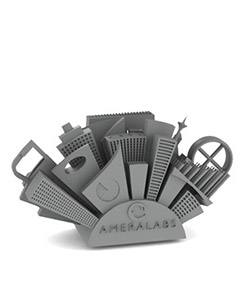
Each 3D printing material is unique. The same applies to SLA 3D printers. In order to get the best results, it is critically important to spend some time and work out best printer settings for a material on hand. Incorrect exposure settings, lifting speeds and heights etc. can lead to many failures or mediocre results. Sometimes people just select settings randomly. If you are lucky enough, you can get decent results. But you would be surprised with the results if those settings were finely tuned. Rewards are really worth the efforts.
The easiest way is to grab your favorite calibration part that is not that tall and you are good to go. Low height is preferable to preserve low number of layers and, thus, fast printing. However, you’d want to use different calibration parts for FDM vs resin. The most popular FDM benchy would not work as well for calibrating resin 3D printers. To ease the stress of selection of resin calibration part and evaluation of results, we have created AmeraLabs town part. You can get the part and read full guide on how to interpret its features to obtain best quality prints here: AmeraLabs Town calibration part. Start with conservative exposure settings and increase or decrease exposure times, lifting speeds etc. based on results. Evaluate results.
8. Ignoring basic safety measures
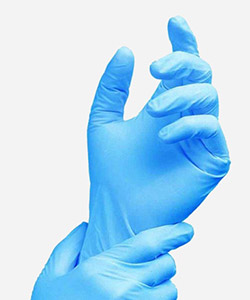
This one is really important and heavily underrated when comparing FDM vs resin. Although, this subject could lead to extensive discussion, we will try to keep it short and improve your awareness.
Resin manufacturers use various classes of raw materials for 3D printing resins. Without going into details the key point here is that you never know, what components are exactly used. Safety datasheets very rarely state all of them. Nonetheless, due to their nature some components are not required to be listed on safety datasheets. Thus, you must pay special attention when handling 3D printing resins.
Being too careless can lead to various health issues. It is paramount here to understand that those effects might not show up immediately. For example, allergies can develop overtime. This delay is usually dangerous as people do not consider 3D printing materials as a main cause, because they had been using them for a while “without any kind of problems”.
Thus, basic safety measures are mandatory. Get yourself a box of gloves and improve ventilation. Remember to keep materials tightly sealed and away from pets or children.
9. Believing everything internet says
Everyone has their own experiences and preferences. People like to share their ideas and a lot of them are great. However, we have seen a ton of discussions and “recommendations” online regarding FDM vs resin 3D printing that are completely wrong. By wrong we mean that science has already proven them to be incorrect. Some of those are also very subjective and not universal.
We would like to recommend double checking all suggestions and tips you get online. By blindly repeating what others do you can easily obtain bad habits or even damage your 3D printer. Carefully check legitimacy of your information source before applying any kind of new practices. Finally, remember that the best helper is your own learning and experience.
Final words
Hopefully, these humble observations would help you to switch from FDM to SLA easier. We would love to see you learn something new and improving your SLA 3D printing. If you have some ideas or suggestions, just drop a comment below.
Other articles from AmeraLabs
And if you have some spare time, check out check our shop and other blog posts:
- Experiment: 3D Printing Supports that Work
- Key things to know before calibrating resin 3D printer
- The Complete Resin 3D Printing Settings Guide for Beginners
- How to Make Jewellery with Silicone Mold
- How to design parts for SLA 3D Printing
- Case Study: 3D printed button for Porsche steering wheel
- Case Study: 3D printed Linear Gear for Extensometer

